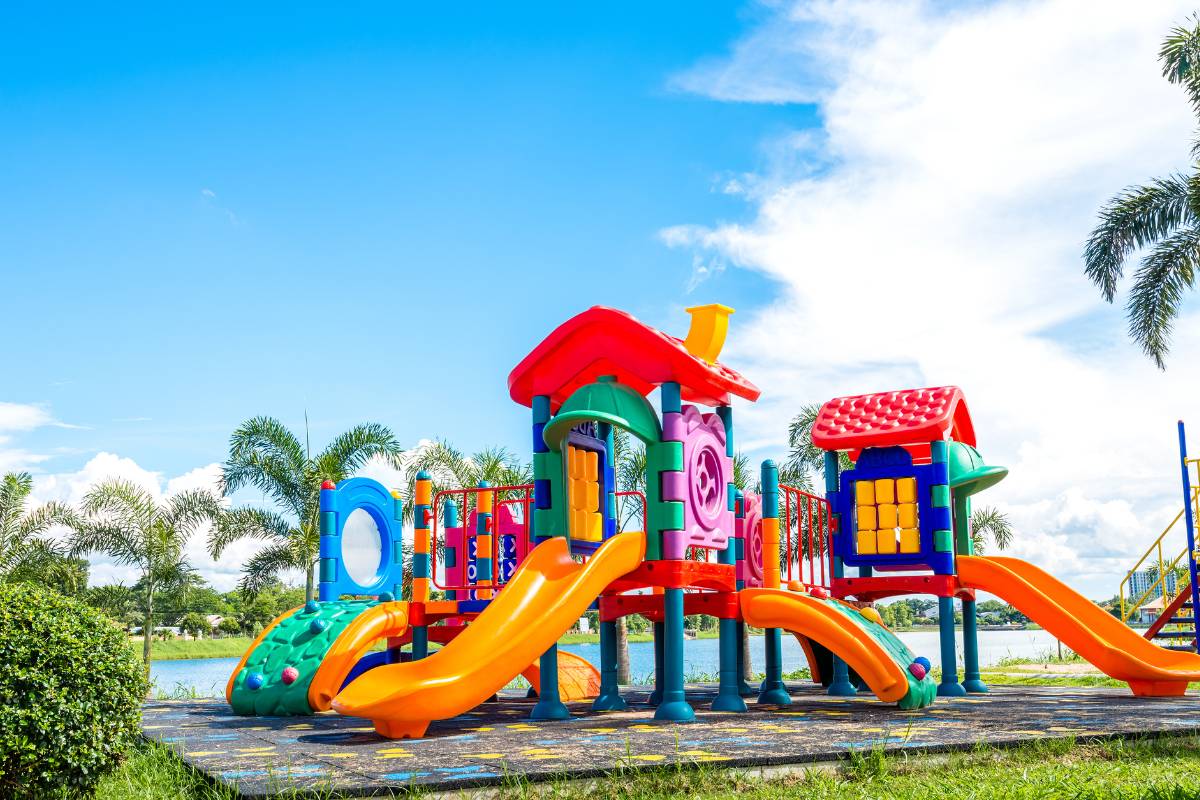10 Benefits of Modern Playground Equipment for Child Development

Playgrounds aren’t just places to hang out or kill an hour. They’re where kids actually grow — physically, mentally, emotionally, and socially. Modern playground gear is clever these days. It’s creative. And — happily — a lot more inclusive than it used to be. So yeah, it’s not just about fun. It’s developmental, too. Below: ten solid ways modern play structures help kids.
Table of Contents
Toggle10 Benefits Of Modern Playground Equipment
Enhancing Physical Fitness
If you want kids to move more, playgrounds are the obvious answer. Screens pull them in; playgrounds pull them out. Simple as that. Climbing walls, balance beams, monkey bars — all of these build real strength, stamina, and agility. Running and jumping help motor skills. Swinging helps timing and hand-eye coordination. And one thing that’s often overlooked: regular play boosts cardiovascular health. Not bad for something that mostly looks like goofing around.
Boosting Physical Confidence With Outdoor Climbing Frames
Outdoor climbing frames are the unsung heroes. They let kids test their limits without a lot of danger. They climb a rope net. They hop between platforms. They feel that rush — and then the calm after. That mix builds upper-body strength, balance and coordination. It also builds confidence. Kids learn persistence. They learn to try again. It’s low-risk adventure, and honestly, it’s pretty great.
Stimulating Cognitive Development
Modern playgrounds have brainy bits, too. Puzzle panels, little mazes, and themed boards nudge logic and memory. Even a pirate-ship obstacle course makes a child plan moves and weigh options. These games sharpen thinking and teach adaptability. Play forces kids to strategize. And they often learn strategy faster when they don’t realize it’s “learning.”
Improving Social Skills
A playground is practice for real life. Kids learn to share space, to take turns, to wait, to persuade — yes, even to argue. Features like team swings, climbing nets, and seesaws naturally spark cooperation. The small squabbles? They’re practice for conflict resolution. Through play, kids pick up empathy and compromise. It’s messy, it’s noisy, and it’s useful.
Fostering Creativity And Imagination
When a playset looks like a castle or a jungle, something magical happens. Kids invent stories. They take on roles. One minute they’re explorers; the next they’re kings or artists. That imaginative play encourages abstract thinking and creative problem solving. The playground becomes a stage. And kids become playwrights, actors, and directors — all at once.
Promoting Emotional Well-Being
Play areas are safe places to feel a lot. Kids face small challenges there and, importantly, overcome them. That sense of achievement — even from something tiny — builds self-esteem. It also helps resilience. And let’s be honest: being outdoors, getting a bit sweaty, taking a break from screens — it calms kids. It reduces stress. It’s a reset button.
Encouraging Inclusivity And Accessibility
Good playgrounds are made so everyone can join. Ramps for wheelchairs, sensory panels, adaptive swings — these are not just nice extras. They matter. Inclusive design teaches children empathy and social cohesion. When kids play together, differences become less like barriers and more like normal variety. That’s how community starts.
Adapting To Changing Play Trends
Play changes — so playgrounds must change, too. Digital-free zones are catching on. Nice, right? They give kids a real break from gadgets. Designers are also blending play equipment with natural elements so spaces feel alive. The result: playgrounds that stay fresh and inviting across generations. They’re not stuck in one era.
Building Risk Assessment Skills
Playgrounds let kids take small, manageable risks. Climbing a little higher. Balancing just a bit longer. Jumping from a safe platform. Those choices teach judgment. Kids learn what’s safe for them and what’s not. That kind of risk assessment pays off later in life. It’s sensible risk-taking in a controlled setting.
Supporting Sensory Development
Modern playgrounds often include textured panels, musical features, and water or sand elements. These engage sight, sound, touch — sometimes even smell. Sensory play is especially helpful for kids with autism or sensory-processing differences. It gives them ways to explore without pressure. And, yes, climbing frames still build strength and coordination while letting imaginations run wild.
Bonus 1: Strengthening Parent-Child Bonds
Playgrounds aren’t just kid zones. They’re family spaces. Parents and caregivers join in sometimes. Other times they watch and cheer. Those shared moments — a laugh, a small celebration — build trust. Playtime often becomes quality time. It’s where memories get made.
When designers plan outdoor spaces for children’s play equipment, it matters. Swings, slides, climbing frames, tiny houses — they all encourage movement, creativity, and socializing. Good materials and thoughtful design mean safety and longevity. That’s why schools, parks, and backyards benefit from quality gear.
Bonus 2: Encouraging Environmental Awareness
Some playgrounds actually try to teach kids about nature rather than playing video games. They add woodwork, sand pits, plants, and other natural features. Eco-playgrounds use sustainable materials and give children a low-key lesson in caring for the planet. It’s hands-on learning, and it tends to stick.
Choose Creative Play UK
For more than thirty years, Creative Play has been designing and installing modern playgrounds across the UK. They focus on innovative, durable solutions. They’ve helped transform lots of ordinary spaces into lively, educational places for kids. If your community is thinking about a new playground, they’re one of the folks people call.
Conclusion
From a child’s view, modern playground equipment does a lot more than entertain. It helps with physical health, mental development, social skills and emotional resilience. It nudges inclusivity and even encourages a bit of environmental awareness. In short: play matters. A lot.
Published by Azura Everhart
I'm Azura Everhart, Digital Marketing Specialist, with over five years of experience helping brands grow through smart, data-backed digital strategies. Holding a Bachelor's in Business Administration and a Diploma in Digital Marketing Strategy, I specialize in building campaigns that connect, convert, and create lasting impact. I also write about the latest in business innovation and health trends, aiming to make complex ideas practical and engaging for modern audiences. View more posts







